Viewing: Blog Posts Tagged with: Records, Most Recent at Top [Help]
Results 1 - 22 of 22
Blog: Children's Illustration (Login to Add to MyJacketFlap)
JacketFlap tags: Records, Jazz, Entirely off topic, david stone martin, Add a tag
Blog: OUPblog (Login to Add to MyJacketFlap)
JacketFlap tags: Arts & Leisure, Adult Musical, Colony Records, Elizabeth L. Wollman, Liz Wollman, stage musicals, Tin Pan Alley, Music, records, New York City, broadway, 1970s, Rock and Roll, memorabilia, sheet music, times square, Hard Times, *Featured, Add a tag
By Liz Wollman
Colony Records, which will close on Saturday, September 15th after 64 years of business, is no mere record store. A cavernous, crowded, and never particularly tidy place, Colony has kept one foot firmly in its Tin Pan Alley past, and the other in its media-saturated present. The largest and easily most famous provider of sheet music in New York City, Colony also houses cassettes, CDs, DVDs, karaoke recordings, an absolutely enormous collection of records, and all kinds of memorabilia: pop music action figures and Beatles mousepads; signed, fading photographs of A-, B-, and C-list celebrities from every decade that the store has been open; novelty key chains and promotional buttons from countless Broadway musicals; old concert programs, playbills, and t-shirts; Ramones coffee mugs and “Glee” lunchboxes; and locked shrines in dank corners, filled with dusty Frank Sinatra, Marilyn Monroe, and Elvis Presley collectibles. The staff, depending on whom you talk to, is comprised either of snobbish, standoffish jerks or brilliant, walking encyclopedias who can help you locate a piece of sheet music within seconds of your humming a few notes from the song in question, no matter how obscure. I suppose that genius and churlishness, just like Tin Pan Alley and rock and roll, are hardly mutually exclusive; the owners’ understanding of this is, in the end, likely why Colony managed to last as long as it did.
Colony Sporting Goods became Colony Records when its owners, Harold S. (“Nappy”) Grossbardt and Sidney Turk, took it over in 1948. Their sons, Michael Grossbardt and Richard Turk, are the current and will be the last owners. Initially located at 52nd Street and Broadway, Colony moved in 1970 to the Brill Building, at Broadway and 49th Street, where it has remained. On a typical day, visitors to the store include tourists from all over the world, members of the theater industry, professional and amateur musicians, and record and memorabilia collectors. Countless celebrities have patronized Colony in its six decades: Benny Goodman, Miles Davis, Frank Sinatra, John Lennon, Elton John, Neil Diamond, and Jimi Hendrix. The bizarrely image-conscious Michael Jackson used to make furtive visits via a back entrance, specifically to buy up enormous amounts of his own memorabilia. According to lore, both Bernadette Peters and Dusty Springfield decided to become entertainers after merely walking by the store and hearing music emanating from it. When James Brown visited, he apparently exclaimed, “This smells like a music store!”
He’s right; it does. And before paying my last visit to Colony this past week, I’d completely forgotten what a music store smells like. Also, what one looks like and feels like.
I am no stranger to Colony. I’ve bought plenty of sheet music from them in the 25 years that I’ve called myself a New Yorker. In that stretch of time, I have been, at various times and sometimes simultaneously, a reasonably good vocalist, a truly terrible pianist, a middling guitar player, and a music scholar who writes frequently about the post-1960 stage musical. I’m not an atypical patron, I think. In the weeks since news of Colony’s closing broke, I’ve heard plenty of people mention that they used to go there regularly when they dabbled in trumpet or in cello, or taught guitar or voice lessons, or before they decided to quit pursuing a career in the theater, or before Amazon started carrying everything they needed.
Yet despite how much it has served us New Yorkers — not to mention the millions of tourists who stroll, sometimes maddeningly slowly, through Times Square at some point during their visit here — I wasn’t terribly surprised by the news that Colony had fallen prey to declining sales, the Internet, and (the final straw) a landlord who plans to quintuple the rent of the store. None of this is shocking, especially when it comes to commercial real estate in Manhattan, which at this point heavily favors conglomerates. Really, the big news to me, at least initially, was not that Colony was closing. It is that Colony has managed to stay open for so very long.
Think about it: Colony opened in 1948. During the 1950s, rock and roll arrived, purportedly to destroy Tin Pan Alley in one fell swoop. During the 1960s, again purportedly, young people en masse abruptly turned their backs on the musical tastes of their elders. During these decades, Colony only grew in size — —so large, in fact, that its owners had to relocate. Its move, in 1970, coincided with one of the darkest periods in New York City’s history. Mired in financial crisis, and inching dangerously close to bankruptcy, New York was hardly a happy place in the 1970s. Times Square, Colony Records’ new home, had become internationally notorious — a sleazy, crime-ridden example of everything that had gone wrong with the urban jungle.
And yet Colony survived it all. It outlasted Beatlemania, psychedelia, disco, punk, hair metal, and hip-hop, MTV, VH1 and the first two decades of the Internet. It outlasted Napster and the dot-com boom. It outlasted Tower Records, HMV, Patelson’s, and Footlight Records. Arguably, it even outlasted, for a while at least, the neighborhood around it; Times Square was given a Disneyfied “facelift” in the early 1990s, which has resulted in a more tourist-friendly and seemingly safer, if also increasingly generic and corporate urban environment. Since it first opened in the postwar era, Colony has grown with and adapted to the times in ways that none of its past competitors managed. My initial reaction, then, was merely to praise Colony — not to mourn it for a second — because in the end, sixty years is a pretty impressive run for a family-owned business in the middle of Times Square.
But then I went to visit, and my logic gave way to a surprisingly emotional wave of nostalgia.
James Brown was right: it’s the smell of the place that gets you first — a mix of old, comfortably dusty things; of vinyl and paper and cool, musty formica. The sounds, too: a mix of Beatles songs blasted through the speaker, competing with several languages being spoken by as many tourists. “Look, honey, a Lady Gaga backpack!” a woman with a thick Long Island accent shouted down the aisle at her absolutely mortified pre-teen son. A man in a suit and sunglasses paced back and forth through the brass section while he talked shop on his phone. “We need to give them more bang for the buck this year,” he said. “Maybe we could get another few animals up on the stage this time around?” As “Strawberry Fields” came on over the speakers, I wandered through the aisle of picked-over cassette tapes, passed a group of Italian women looking at Beatles memorabilia, and found a huge basket of promotional pins from past Broadway musicals. I grabbed three, almost at random, from shows that all flopped at least a decade ago: Nick and Nora, Mayor, James Clavell’s Shogun: The Musical. The producers of those shows would have killed for even a fraction of the run that Colony has had.
I was about to leave, but then I started rifling through music books for the sake of rifling through music books. New ones, used ones, ones for woodwinds, piano, violin, voice, and guitar. They are, I am sure, all available online should I ever decide to become a terrible violinist or a horrible oboeist. But wandering through so much sheet music, being able to reach out and touch it, page through it, admire the quality of the paper is — much like spending an hour or two in a store flipping through records, or cassettes, or CDs — something I’d completely forgotten the pleasure of. I’ve spent a great deal of my life killing time in stores like these. I miss them, even as I understand that times change and modes of commerce with them. The automats are gone, too, from Times Square. So are the dime museums, the grindhouses, the arcades and the penny restaurants, and yes, the notorious if occasionally hilarious XXX theaters (a favorite marquis post from the early 1980s: “Hot As Hell! A Potent Groin Grabber!!”). I am sure that whatever chain store opens up in the place of Colony — be it a Gap, an Urban Outfitters, or a particularly snazzy Applebees — will, someday, also eventually close up shop.
I ended up purchasing the three pins, along with two used books of classic rock and pop songs “for very easy guitar,” which is about my speed these days. Warren, the longtime Colony employee who rang me up, gave me one of the pins for free, and then called my attention to the song that had come on over the speakers. “Man, this is the Beatles before they even sounded like the Beatles, you know?”
“Sure,” I replied, snapping out of my fog of nostalgia to focus on his. “Because it wasn’t their song, right? It was one of the songs they covered. It was originally by — by –”
“It’s ‘Matchbox,’” he said. “Carl Perkins. 1955? No. 1956.”
I chuckled. “Thanks.” I said, taking my bag and preparing to leave Colony for the last time, and realizing that my eyes were welling up. “For everything. I’ll miss you.”
He didn’t look surprised at all. “I know,” he said, gently. “We’ll miss you, too.”
Elizabeth L. Wollman is Assistant Professor of Music at Baruch College in New York City, and author of Hard Times: The Adult Musical in 1970s New York City and The Theater Will Rock: A History of the Rock Musical, from Hair to Hedwig. She also contributes to the Show Showdown blog.
Subscribe to the OUPblog via email or RSS.
Subscribe to only music articles on the OUPblog via email or RSS.
View more about this book on the ![]()
![]()
Blog: librarian.net (Login to Add to MyJacketFlap)
JacketFlap tags: records, access, metadata, datasets, opendata, Add a tag

image from The card catalogue: a practical manual for public and private libraries via Open Library
When people ask me what skills will be useful for the 21st Century Librarian one of the things I frequently mention is being able to work with giant datasets. This is true for many professions such as journalism but the past few years, even the past few months have really shown some exciting opportunities for people who work with libraries, and peopla who love metadata. Harvard’s release of 12 million bibliographic records was only the most recent giant dataset made available. Interested data manipulators also have metadata from the University of Mighigan, Cambridge University, the British Library, some records from the Library of Congress, University of North Carolina, Toronto Public Library and more smaller libraries and archives can be found via the Internet Archive. Exciting times to be sure.
Blog: Maud Newton (Login to Add to MyJacketFlap)
JacketFlap tags: ancestry.com, public libraries, Remainders, records, Add a tag
What Middletown Read tracks borrowing records of Muncie Public Library patrons from 1891 to 1902 and shows how library use is not a lonely act but “part of the complex story of the social nature of reading.”
Add a CommentBlog: Shelf-employed (Login to Add to MyJacketFlap)
JacketFlap tags: football, sports, book review, nonfiction, records, J, Non-Fiction Monday, Add a tag
 Gramling, Gary, Christina M. Tapper, and Paul Ulane. 2011. Sports Illustrated Kids 1st and 10: Top Ten Lists of Everything in Football. New York: Time.
Gramling, Gary, Christina M. Tapper, and Paul Ulane. 2011. Sports Illustrated Kids 1st and 10: Top Ten Lists of Everything in Football. New York: Time.Here are thirty-six "top ten" lists of some of football's great achievers (touchdown leaders), achievements (Super Bowls), and curiosities (wackiest weather, nicknames, quotes, etc.)
Do you know the top ten undrafted players? The top ten biggest players? Comeback games? Famous quotes? Craziest hairstyles? (yes, Troy Polamalu is #1) You'll know them all after reading 1st and 10.
The large size (over 11" square), makes this the perfect browsing book for football season. Books of this sort often have a relatively short shelf life, as players retire and records are broken; so if you've got a copy of this book in your library, put it out on display and start it moving!
I'm not a football fan, but I'm a pretty good judge of what kids will check out of the library. Football fans are sure to find something to interest them in this 95-page volume filled with photos.
In light of the recent football scandals at two universities, it should be mentioned that 1st and 10 features only professional teams.
Blog: KidsBooksNZ (Login to Add to MyJacketFlap)
JacketFlap tags: records, wildlife, rugby, Dave Gunson, Stephen Barnett, encyclopaedia, Peter Harold, Add a tag
The Book of New Zealand Records and Firsts by Stephen Barnett (Scholastic) On the front cover the book promises Biggest, Fastest, Most Unusual and More - and you certainly get that. First we find out which Kiwis have set records for the fastest, deepest and longest. We meet adventurer Shaun Quincey who rowed the fastest across the Tasman, 17-year-old Elliot Nicholls who broke the world record for the fastest texting whilst blindfolded, then two young lads who dove the deepest depths, the boat that set a new world record for the fastest time around the world in a powerboat, and the tap dancer who danced 610 taps a minute, and lots more. Next, we see the biggest and most such as the world record chocolate bar, the world's record price for a bird's feather, the largest wasp nest recorded in New Zealand, the man who learnt more than 58 languages, the biggest ball of tape, the most expensive tiny piece of paper, the biggest children's sporting event in the world, and the cricketer who set the world record for the greatest number of tennis balls caught in one minute. Thirdly, we're treated to some of the most unusual records (didn't we just have some of those). Like the Twisty Twinz who climbed into a perspex box and set a new world record, the seven-legged lamb, and the World's steepest street (in Dunedin). Lastly, are the New Zealand firsts such as the pigeon post, the coach who took jogging to the world, the adventurer who climbed the highest mountain, the bungy jumpers and more. Great reading for kids who like their facts. Ideal for Middle, Senior Primary and Intermediate-aged classrooms.
On the front cover the book promises Biggest, Fastest, Most Unusual and More - and you certainly get that. First we find out which Kiwis have set records for the fastest, deepest and longest. We meet adventurer Shaun Quincey who rowed the fastest across the Tasman, 17-year-old Elliot Nicholls who broke the world record for the fastest texting whilst blindfolded, then two young lads who dove the deepest depths, the boat that set a new world record for the fastest time around the world in a powerboat, and the tap dancer who danced 610 taps a minute, and lots more. Next, we see the biggest and most such as the world record chocolate bar, the world's record price for a bird's feather, the largest wasp nest recorded in New Zealand, the man who learnt more than 58 languages, the biggest ball of tape, the most expensive tiny piece of paper, the biggest children's sporting event in the world, and the cricketer who set the world record for the greatest number of tennis balls caught in one minute. Thirdly, we're treated to some of the most unusual records (didn't we just have some of those). Like the Twisty Twinz who climbed into a perspex box and set a new world record, the seven-legged lamb, and the World's steepest street (in Dunedin). Lastly, are the New Zealand firsts such as the pigeon post, the coach who took jogging to the world, the adventurer who climbed the highest mountain, the bungy jumpers and more. Great reading for kids who like their facts. Ideal for Middle, Senior Primary and Intermediate-aged classrooms.
RRP $17.00 ISBN: 978-1-77543-031-5
The Small Blacks Annual by Peter Harold (Penguin)
 Printed on glossy paper in A4 size and 96 pages long we have another rugby book for kids. This time the focus is not on the All-blacks but rather the kiwi kids aged 5-12 who play rugby. There's loads of photographs of kids playing rugby, stories, articles about famous rugby players, activities, interesting facts such as why do we get stitch and how do we get rid of it, tips on rugby skills, recipes, quizzes, jokes, Maori vocabulary, cartoons, poetry, songs, and news articles - phew! A lot is packed in for rugby fans to saviour. For ages 8-12 year olds who are rugby mad.
Printed on glossy paper in A4 size and 96 pages long we have another rugby book for kids. This time the focus is not on the All-blacks but rather the kiwi kids aged 5-12 who play rugby. There's loads of photographs of kids playing rugby, stories, articles about famous rugby players, activities, interesting facts such as why do we get stitch and how do we get rid of it, tips on rugby skills, recipes, quizzes, jokes, Maori vocabulary, cartoons, poetry, songs, and news articles - phew! A lot is packed in for rugby fans to saviour. For ages 8-12 year olds who are rugby mad.RRP $19.99, ISBN: 978-0-1433-0657-3
The Big Book of New Zealand Wildlife by Dave Gunson (New Holland)
 The Big Book of New Zealand Wildlife is a comprehensive collection of birds, animals, insects, fish, plants and fungi in one single volume. If it looks familiar - yes, it is a compilation of all the 'All About' series books produced in encyclopaedia format. You'll find over 400 species of New Zealand natives brought to life with colourful illustrations and interesting facts. Designed to be easily accessible for 7-14 year olds. An excellent reference bo
The Big Book of New Zealand Wildlife is a comprehensive collection of birds, animals, insects, fish, plants and fungi in one single volume. If it looks familiar - yes, it is a compilation of all the 'All About' series books produced in encyclopaedia format. You'll find over 400 species of New Zealand natives brought to life with colourful illustrations and interesting facts. Designed to be easily accessible for 7-14 year olds. An excellent reference bo
Blog: inspiration from vintage kids books and timeless modern graphic design (Login to Add to MyJacketFlap)
JacketFlap tags: records, Found design, videos, Add a tag
I really enjoyed this video tribute to the legacy of Reid Miles. The piece was conceived to promote a series of summer jazz concerts at the Bella Vista Social Pub in Siena, Tuscany. If you are unfamiliar with Reid’s design work for Blue Note, Graphicology offers a side by side comparison of the reimagined covers with the original album art.
(via Swiss Legacy)
——————–
Also worth viewing: 2000+ Bossa Nova Album Covers
Not signed up for the Grain Edit RSS Feed yet? Give it a try. Its free and yummy.
——————–
No TagsBlog: inspiration from vintage kids books and timeless modern graphic design (Login to Add to MyJacketFlap)
JacketFlap tags: brazil, 1960s, Found design, graphic-design, records, Add a tag
Recent exhibition of Rogerio Duarte’s work at the Narrows Gallery.
Rogerio Duarte is a Brazilian graphic designer, musician, poet and philosopher. He is also considered to be one of the founding fathers and the main intellectual force behind the Tropicalia movement in the late 1960s. During this period he designed album covers for many of the great names of Brazilian popular music, such as Caetano Veloso, Gilberto Gil, Gal Costa, João Gilberto and Jorge Ben. If you have access to idea magazine, I recommend picking up the March issue (#339). It features a 24 page article on Duarte and includes a nice selection of his work.
—–
Like what you see? You might also enjoy Almir Da Silva Mavignier, Odilea Toscano, Gian Calvi, 2000+ Bossa Nova Covers
Hungry for more? Sign up for our Grain Edit RSS Feed. It’s free and delicious!
—–
No TagsBlog: inspiration from vintage kids books and timeless modern graphic design (Login to Add to MyJacketFlap)
JacketFlap tags: BOOKS, records, germany, vintage, 1960s, 1970s, Add a tag
Jazzin the Black Forest - The Complete Guide to Saba/MPS Jazz Records -Published by Crippled Library c1999
Jazzin´the Black Forest is the story of the SABA/MPS jazz label. It was established during the early 1960s and is considered to be Germany´s first independent label. From the label’s beginnings up to its sale to Polygram in 1983, SABA/MPS released over 700 LPs. This book features full color images of all the LPs, a complete index as well as poster reproductions.
Saba/MPS played host to an impressive list of artists including: Albert Mangelsdorff, Joachim Kühn, Volker Kriegel, Wolfgang Dauner, Baden Powell, Oscar Peterson, Duke Ellington, Jean Luc Ponty, Monty Alexander just to name a few.
According to the amazing Birka Jazz website “Joachim-Ernst Berendt produced a large number of records, especially live recordings and recordings in studios outside Villingen. Berendt, and his wife Gigi, also contributed to the label’s visual look. Their interest in modern art led to that MPS frequently brought in artists to adorn the covers. Gigi Berendt also designed album covers herself.”
The book is currently out of print, but maybe if enough people contact the publisher they would consider republishing this gem.
———————-
Also worth checking: Mike Cina Jazz Mix
Album covers from the Groove Merchant
———————-
Not signed up for the Grain Edit RSS Feed yet? Give it a try. Its free and yummy.
No Tags©2009 Grain Edit
Blog: inspiration from vintage kids books and timeless modern graphic design (Login to Add to MyJacketFlap)
JacketFlap tags: records, Jazz, Features, vintage, 1960s, mixes, Add a tag
Mike Cina - Spirit Edit Jazz Mix
In this 4th installment of grain edit mixtapes, we caught up with design nut and all-around awesome guy Mike Cina. When Mike isn’t manning the helm at YouWorkForThem he’s digging through your grand pa’s record collection. Today we’re excited to present an exclusive jazz mix he created for grain edit readers.
Before we get to the mix, I had a chance to pick Mike’s brain on record collecting, typography and album cover art.
When did you start collecting records?
I started ‘collecting’ in high-school, 1986, but I started shopping for records when I was 7. My father used to take me out once a month or so to hit up some record stores. Like most kids, I wanted to be like him, so I would buy records but I was into disco and pop. He was into deep heavy rock (Electric Prunes, Blue Cheer, Black Sabbath) so whenever I would play my stuff, he would exit stage left.
In high school I started actually getting a collection together. I probably had 800 or so records back then. Anything from Acid House to Metal. In the mid 90’s I only was buying CD’s. Finally in the late 90’s I realized that CD’s were a waste and started upgrading all my CD’s to vinyl. Never regretted that move.
Can you tell us a little about the albums you selected for the mix and why you chose them?
I chose a wide range of music but the common thread are jazz musicians that had spiritual ties. In the 60’s and 70’s you had a lot of small independent labels (Saturn, Nimbus, Black Jazz, Strata East, Tribe, etc) that put out amazing work. Ideas were everywhere and people were exploring new territories. There were a lot of musicians also deep into religion and they made jazz music based off of their relationship with God. John Coltrane pretty much launched this movement, being an extremely spiritual person. I can’t quite explain it, but the music has a different feeling and sound. This mix takes a journey into what people now call “Spiritual Jazz.”
For some people Jazz can be hard to understand or appreciate, what is it that resonates with you?
The first time I “heard” jazz was when I was in college and a friend dropped Herbie Hancock “Headhunters” at my house one night. It really resonated with me, especially the track Chameleon! When the transition in the middle of the song happens you just get all warm and a light turned on in my brain. I was playing house music out at the time and they would sample jazz a lot, so I knew your basic jazz and soul hooks. The next lp I bought was Coltrane’s “Interstellar Space” and that did not resonate with me at all. After that was Dolphy’s “Out to Lunch” and that was a little better. I kept trying different ‘classics’ until I got to Coltrane’s”Love Supreme” and then things clicked a little more. I think the more you listen to jazz, your ear sharpens and you can hear more things. Doors start to open, you can start to hear emotions, personalities, ideas and conversations with the band members. Raw feelings. The best jazz to me is music that is caught up in a struggle of emotions.
Do you see any connections between typography and jazz?
If you look at anything from the constructivist workings, avant garde typography, down to the Reid Miles covers, or even Niklaus Troxler posters… you can see how words and jazz mix. There is a rhythm in how people speak and can relate to music as well. So if you take how people talk, you can express that visually with the letters. Or even capture the mood or emotion of the players, much like Reid Miles did. I don’t think he captured the music, but more the feeling and personalities of the players. There are a lot of new books coming out about album cover art, so I think that is a testimony that music does inspire design.
What are your thoughts on the downloadable music culture and its
effect on album cover design?
Where do you begin? The music industry does not care about making good music. When they changed from vinyl to tapes to CD’s, they fully knew it was not as dynamic but very portable. Ever since then, they have pushed a more disposable format. Nothing can replace the size, feel and emotion that you can get from a beautiful lp cover. To be honest, I don’t even care what most albums look like anymore if it is digital. They could have any image because I can’t see the cover unless I choose to look at it or add it in iTunes. With an album, you have to look at it. You have to put money and effort into making an LP. It is just the perfect size and shape to get enough detail and do a dynamic layout.
Every collector has that prized find. What record is that for you?
I have found some nice stuff. These are not the most rare but finding a white label of Skull Snaps, Tom Scott’s “Honeysuckle Breeze” was nice. My favorite stuff to find is private-press jazz and boogie. To answer your question, my prized lp is Oriental Jazz by Lloyd Miller. It is one of those lp’s that just resonates with me.
Do you have any other record digging stories you can share with us?
I have been in more than a couple odd situations where I felt like I could have been abducted extremely easily. The classic one was where we are in Ohio and are calling record stores. This guy answers and said he closed his shop but is willing to let us peek around for a bit of what stock he has. We drive up to the address and we are in a bad side of town. When we park I am thinking my car is going to get stolen. I see these guys walking down the street and tell my friend to watch out as he is opening the door and he practically hits these guys with my car door. They murmur something to him and we see this guy opening these big wooden panels on a shop. When we walk in, there are records all over the place and nothing is priced. We sort through it all and found some nice Blue Notes. When we are done, he says yeah your car is still there (he was watching it) want to see more records? So we say yep. We go around this bulletproof glass barrier into another room that looks like a bomb went off in it. Records were everywhere, we were walking on records to get to the main part of the room. We spent a good hour or two there, pulling some nice jazz and Soul. So when we are done, he says there are some lps in the basement. Well we go downstairs and the air is thicker than I have ever breathed. Damp as anything with a mold and mildew stench. My friend and I have our arm over our mouth so we can breathe and the owner doesn’t go down. It’s basically something straight out of Pulp Fiction and the word “gimp” comes in my head immediately.
So we are down there and there is one green bulb on and you can barely see. We said we had enough and he said well there is another basement down from here with more records. We reluctantly say okay and we go
down further and I can’t even breathe and my friend murmers lets get the hell out of here’ and he goes upstairs. I did see a audiofile Herbie Hancock “Maiden Voyage” so I run over and grab it and go upstairs. I was really thinking NOBODY would have found us if something happened, being probably 30 or more feet underground. The only reason I went down is because the owner was a really nice guy.
So he said he had yet another warehouse with some as well so we go there too and had crates and of crates of jazz. I was just spent so really didn’t look as sharp as I should have. It was just a great time but took up a half of a day. I think I got 70 something records there. Checking out closed warehouses full of lps are ALMOST always a treat.
Reid miles/ Blue Note is often mentioned when the subject of cover
art is brought up. What other jazz labels do you feel we’re/are
consistently producing solid cover art?
ECM is probably my favorite overall from front-to-back cover. I used to see them all the time for 50 cents and passed on them until I thought that I should just buy them all for the covers. Well, I started really getting into the releases that came out before 1980 and started collecting them. I have their first hundred-and-something releases (ECM1001-ECM1120) or something. Blue Note is essential, Strata-East, Tribe, Impulse is okay (their spine is the best ever though). Factory Records and 4AD is pretty amazing but not jazz.
……and now the Spirit Edit Mix!
Here’s the track listing:
1. Marion Brown - Bismillahi
2. John Coltrane - The Sun
3. Adele Sebastian - Desert Fairy Princess
4. The Clifford Jordan Quartet - John Coltrane
5. Lloyd Miller - Gol-E-Gandom
6. Pharoah Sanders - Love is Everywhere
7. Hino and Garper - Red Eye Special
8. Carlos Garnett - Mother of the Future
9. Doug Carn - God is One
10. Heikki Sarmanto - Duke and Trane
Many thanks to Mr. Cina for putting this mix together. Be sure to catch Mike at YouWorkFormThem and Twitter.
———————-
Also worth checking: Mike the 2600 King Mix, Props Radio Designer Music, Afreeka Mix
Not signed up for the Grain Edit RSS Feed yet? Give it a try. Its free and yummy.
———————-
No Tags©2009 Grain Edit
Blog: inspiration from vintage kids books and timeless modern graphic design (Login to Add to MyJacketFlap)
JacketFlap tags: illustration, music, Uncategorized, records, 1960s, 1970s, graphic-design, Add a tag
Designer Music #1 - A Special Music Mix for Grain Edit Readers
Once a week I look forward to receiving a hot dj mix from my friend Freddy over at Props Radio. Sometimes it’s funk, other times it’s Soul, Disco, Jazz or Hip Hop. Two weeks ago, he blew my mind with his 3 FEET HIGH AND RISING turns 20 mix. The mix paid tribute to this classic De La Soul album (easily in my top top 5 Hip Hop albums of all time) and included many original songs that Prince Paul sampled to create this masterpiece. This week Freddy serves up not one, but 2 special mixes especially for Grain Edit readers!
“Designer Music,” compiles eight tracks from records highlighting the artists, designers and illustrators who visualize the music. This first edition showcases designers Bob Gill, B & B Wojirsch for ECM Records, Milton Glaser, Bob Ciano for CTI Records, Herb Lubalin, Reid Miles for Blue Note Records, Niklaus Troxler and Robert Brownjohn.
Visit the record gallery and listen to Designer Music 1 here.
Designer Music #2
Designer Music 2 focuses on artists and illustrators. Includes cover art by Jean-Michel Basquiat, Mati Klarwein, Roger Dean, Corky McCoy, Overton Loyd, Victor Moscoso, Stanislaw Zagorski and Pedro Bell. Music by Rammelzee, Parliament, Gil Scott-Heron, Herbie Hancock, Earth, Wind & Fire, Babe Ruth and Herbie Hancock.
Visit the record gallery and listen to Designer Music 2 here.
++Note++ When your in the gallery click “enjoy” to listen to the mix.
———————–
About Freddy
Freddy Anzures digs graphics and music. His eyes, ears and hands got dirty during high school summers at the print department at Howard University in Washington DC, being exposed to pre-desktop era graphics and pre-CD era music. Twenty years ago, in the summer of 1989, Freddy’s life changed when he played the brothers he was workin’ with the Beastie Boy’s Paul’s Boutique on cassette…he got hipped to the original samples that made up the now classic album. De La Soul’s 3 Feet High And Rising and Public Enemy’s It Takes A Nation Of Millions To Hold Us Back soon entered the fray and were put under a microscope. It was the cut-n-paste, collage style of the Dust Brothers, Prince Paul and the Bomb Squad, respectively, that informs much of Freddy’s graphic work. Designwise, lettering and drawing styles like Ed Benguiat’s hand drawn type for Superfly or Milton Glaser’s Dylan poster, as well as typographic experiments like Robert Brownjohn’s Watching Words Move or Herb Lubalin’s Avant Garde magazine are constant sources of inspiration, though he is most influenced by the thoughts of Paul Rand, George Lois and Bob Gill in the realm of communication.
Freddy designs record sleeves and flyers for Groove Merchant Records, redesigned Wax Poetics magazine and is a designer in the Human Interface group at Apple that designed the iPhone. His extracurricular creative outlet is called “props” (http://www.p-r-o-p-s.com) where you can find samples of his graphic work as well as propsRadio, a weekly podcast you can subscribe to in iTunes featuring eight tracks put together from records. He also djs on special occasions too.
———————–
Many thanks to Freddy for putting these mixes together!
Not signed up for the Grain Edit RSS yet? Give it a try. Its free and yummy.
No Tags©2009 Grain Edit
Blog: librarian.net (Login to Add to MyJacketFlap)
JacketFlap tags: librarything, data, records, access, oclc, worldcat, sharing, guardian, timspalding, Add a tag
The Guardian has a long article about what the mechanisms are that keep local library catalogs form being effectively spidered and Googleable. They dip into the complicated area that is policies around record-sharing and talk about OCLCs changed policy concerning WorldCat data. This policy, if you’ve been keeping close track, was slated to be effective in February and, thanks in no small part to the groundswell of opposition, is currently being delayed until at least third quarter 2009.
Blog: Cynthia's Attic Blog (Login to Add to MyJacketFlap)
JacketFlap tags: records, series, Beatles, cynthia's attic, albums, young readers, oak mountain academy, record player, Add a tag
Blog: inspiration from vintage kids books and timeless modern graphic design (Login to Add to MyJacketFlap)
JacketFlap tags: lps, Uncategorized, records, Jazz, vintage, albums, 1960s, 1970s, album-covers, graphic-design, Add a tag
grain edit is proud to announce for your viewing pleasure the second installment in our ongoing record gallery series.
——–
One of the first people I met when I moved to California was Chris Veltri. Chris aka “Cool Chris” owns the world renowned Groove Merchant record store which has become a haven for those looking for obscure jazz, soul, funk and latin records. Chris is one of the nicest guys you’ll ever meet and his knowledge of music is bordering on insane. I couldn’t begin to count the amount of amazing albums he has exposed me to.
On one of my trips to Chris’s house I had a chance to take a few photos of his personal record collection. I only had time to go through a small portion of his collection, so here are a few of the choice album covers.
*Note - sorry for the poor image quality on some of the photos. I was having an issue with my camera.
Also worth checking:
The Record Gallery part 1- Mike the 2600 King
No TagsBlog: inspiration from vintage kids books and timeless modern graphic design (Login to Add to MyJacketFlap)
JacketFlap tags: records, modern, owls, vintage, 1960s, Found design, accessories, homes, Mid-century, Scandinavian, collections, Add a tag
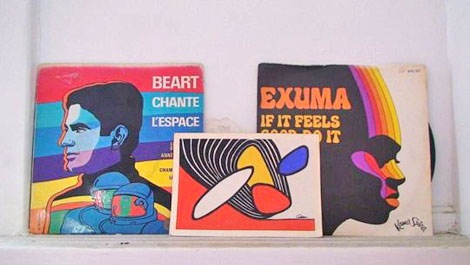

Apartment Therapy posted photos of Sam Grawe’s apartment yesterday as part of their 2008 home tour series. Sam is the Editor-in-Chief at the San Francisco based Dwell Magazine. If you are unfamiliar with Dwell, it is a magazine that focuses on modern architecture and design.
Sam has lots of goodies in his house. The place is filled with Danish modern furniture, Bertoia chairs and Scandinavian nic nacs. What did me in was the record covers and the owls. This is a man that loves owls! He has a slew of these Edvard Lindahl looking ceramic miniature birds of prey. Too be fair, it looks he holds no Owl biases. I see examples of Strigidae (Heck yea, I’m name dropping) as well as the barn yard variety. I actually know nothing about Owls. I picked all this up in a two minute search at Wikipedia. Anyways, I’m getting off track. To sum up, just check out the house tour.
No TagsBlog: inspiration from vintage kids books and timeless modern graphic design (Login to Add to MyJacketFlap)
JacketFlap tags: records, graphic design, modern, 1960s, Found design, swiss, switzerland, joseph-muller-brockmann, Add a tag
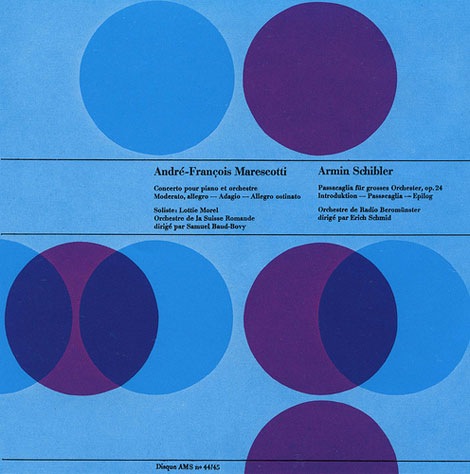
Andre-Francois Marescotti / Armin Schibler album cover - Designed by Joseph Muller Brockmann
I’m off to a late start today, I was up late last night making a few changes to the far right column. In addition, I’ve added a page dedicated to our Modern Sticker + Stamp club and Paul Rand group. Give it spin!
I hope everyone had a great weekend. Has anyone been to the Birth of Cool : California at Midcentury exhibition yet? I’m dying to go but, I haven’t had a chance yet. I’d love to hear your thoughts on the exhibit.
Up above. Beautiful example of Swiss graphic design via Alki1.
No TagsBlog: inspiration from vintage kids books and timeless modern graphic design (Login to Add to MyJacketFlap)
JacketFlap tags: records, germany, modern, out of print, 1960s, Found design, ephemera, Add a tag

Slick 45 record sleeve with a nice modern pattern for the German label Heliodor. Anyone know what typeface that is?
(Via Kavel’s awesome record envelope)
1960s, ephemera, germany, modern, out of print, recordsBlog: inspiration from vintage kids books and timeless modern graphic design (Login to Add to MyJacketFlap)
JacketFlap tags: music, Canada, records, Off our book shelves, graphic design, out of print, 1970s, lp covers, Add a tag
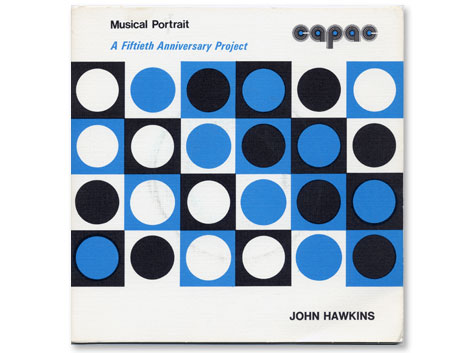
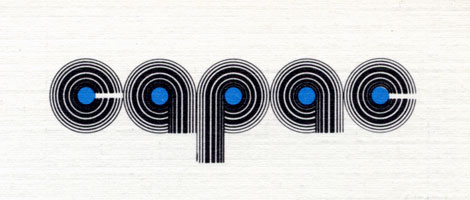
The Asian American Film Festival is in San Francisco now, so I had a chance to check out “Blood Brothers” which is one of the more recent films produced by John Woo. Anyone else seen this? Overall I thought it was pretty cheesy, but the ending wasn’t too bad. On the way to the theater I stopped by my friend Cool Chris’s record shop. Chris runs Groove Merchant which is notorious amongst beat diggers and record collectors as the place to go if you want to find rare jazz, funk and library lps. While I was there Chris hit me off with a copy of the record above.
The John Hawkins lp seen above is part of a series of 45s (the little records..7″) initiated by CAPAC (Composers, Authors and Publishers Association of Canada Limited). I’m less concerned with the music on this album as I am with the design of the logo. The rounded letters take form as records with the lines of different weights creating the grooves. It wasn’t uncommon to see logo treatments like this in the 1970s but in this case it works for me.
1970s, Canada, graphic design, lp covers, music, out of print, recordsBlog: OUPblog (Login to Add to MyJacketFlap)
JacketFlap tags: Music, Reference, UK, records, A-Featured, Online Resources, online, popular, pop, larkin, bbc, beatles, blues, oupblog, springfield, Add a tag
By Kirsty OUP-UK
This week I’m delighted to be able to bring you another post from Colin Larkin, editor of The Oxford Encyclopedia of Popular Music. In his last post for the OUP blog, Colin told us what he thought of Christmas records. This time around he explains why he really believes video killed the radio star. Do you agree with him? Let us know in the comments box below!
Ah the 60s. Catch a last lingering whiff of patchouli while the musical decade which changed the world slowly fades and the protagonists, movers and shakers retire or die.
(more…)
Blog: OUPblog (Login to Add to MyJacketFlap)
JacketFlap tags: kinks, pogues, Music, UK, christmas, records, A-Featured, Online Resources, A-Editor's Picks, oupblog, reindeer, merry, Add a tag
By Kirsty OUP-UK
Growing up, one of the highlights of Christmas Day was to tune into Top of the Pops so that I could hear what had made it to the coveted Christmas Number 1 slot. While over the last two or so years the number 1 single has been a result of The X Factor - basically our American Idol, complete with Simon Cowell and Sharon Osbourne - in previous years the bookies have taken a huge amount of money in bets on who would make it to the top spot. And nothing says Christmas like a novelty record or two somewhere in the running. Join Colin Larkin, editor of Oxford’s 10 volume Encyclopedia of Popular Music (which will also be launching online very soon) as he gives his expert opinion on Christmas Records of our time.
Blog: Children's Illustration (Login to Add to MyJacketFlap)
JacketFlap tags: Records, vintage, audio, Add a tag
Blog: librarian.net (Login to Add to MyJacketFlap)
JacketFlap tags: 'puters, authority, data, loc, marc, records, tek, Add a tag
I’ve been chitchatting with Simon as he’s been compiling and data-cleaning his set of LoC authority records. He’s at ALA now, and the data has been released into the wild. There’s something that warms my little librarian heart getting to read raw MARC on my own little laptop. Try it yourself!
authority, data, loc, marc, records, tek



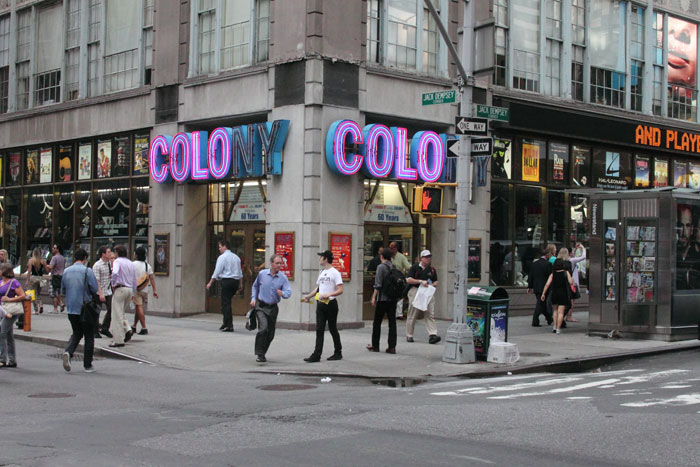
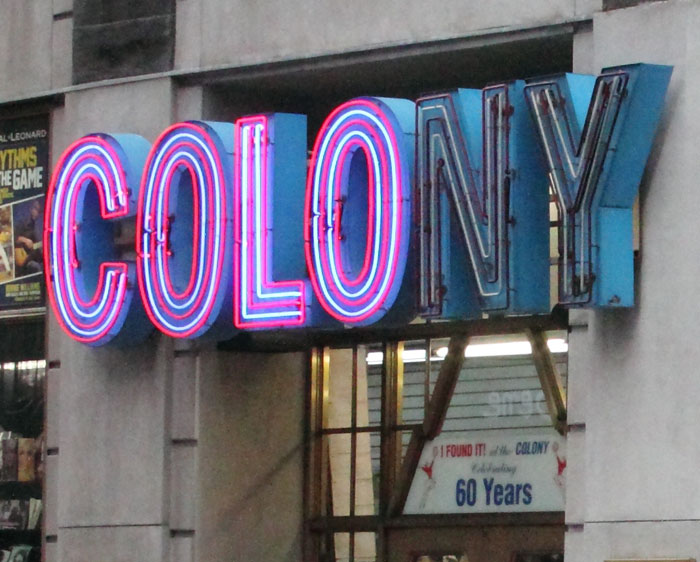

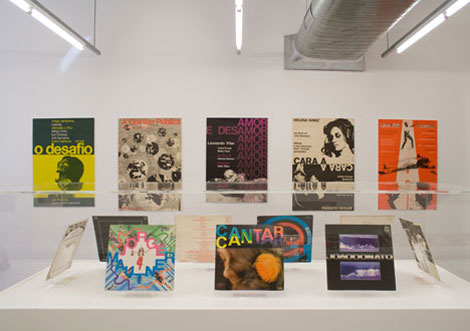
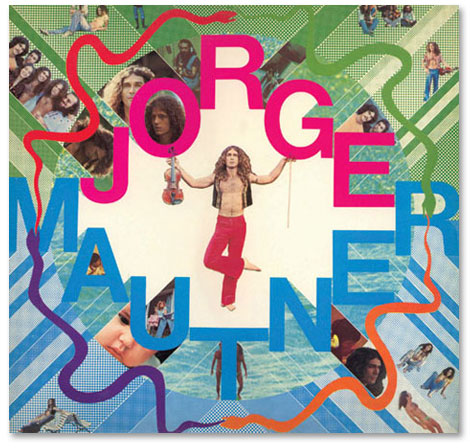
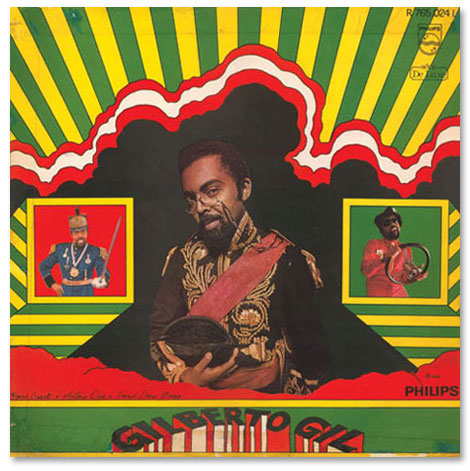
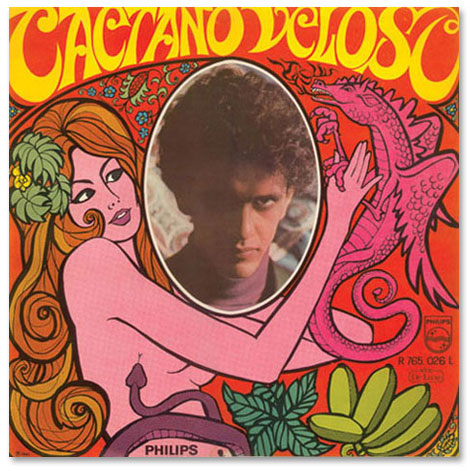
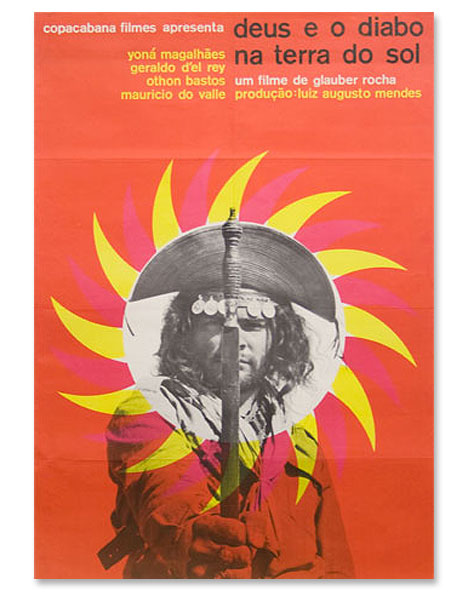
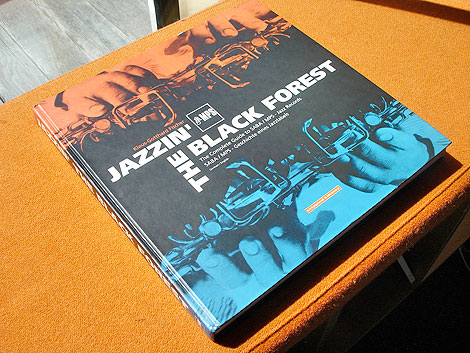
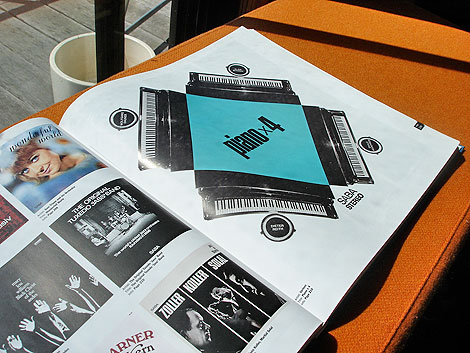
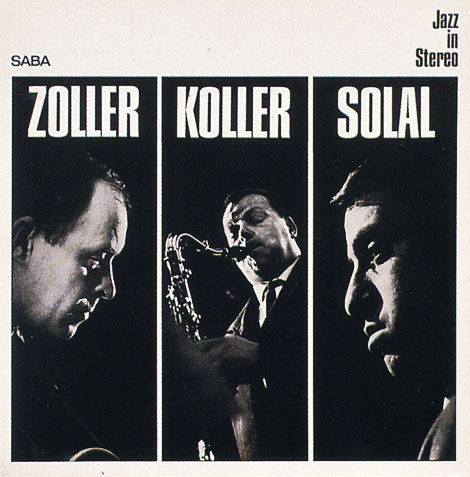
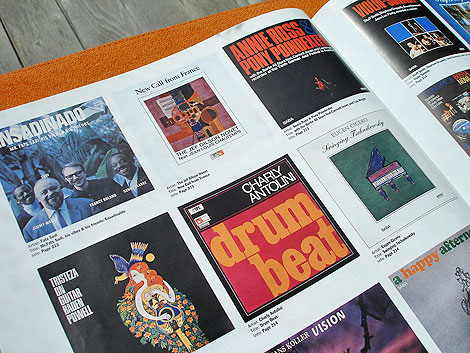
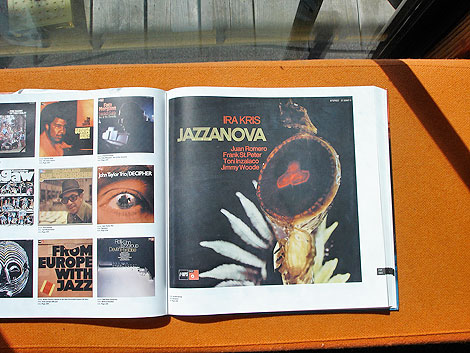
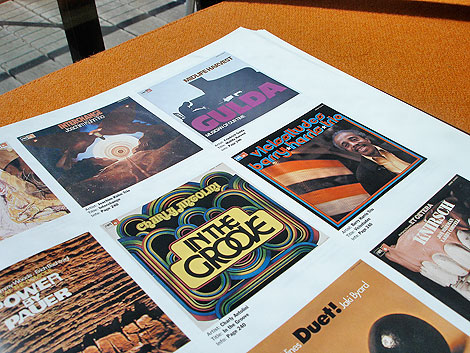
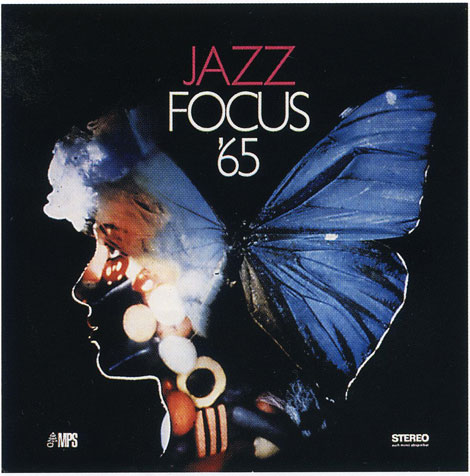
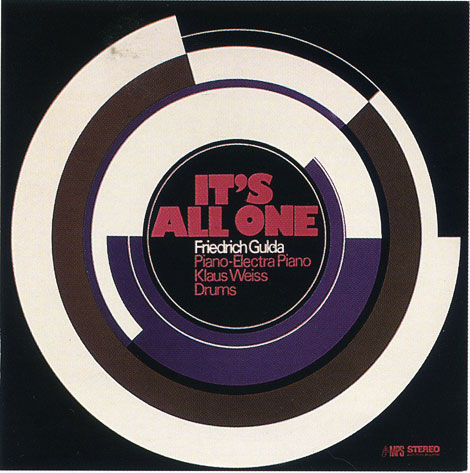
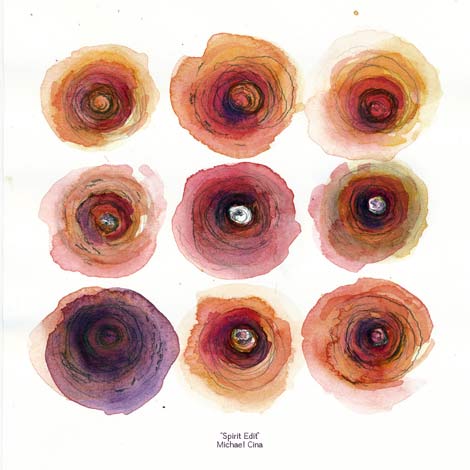












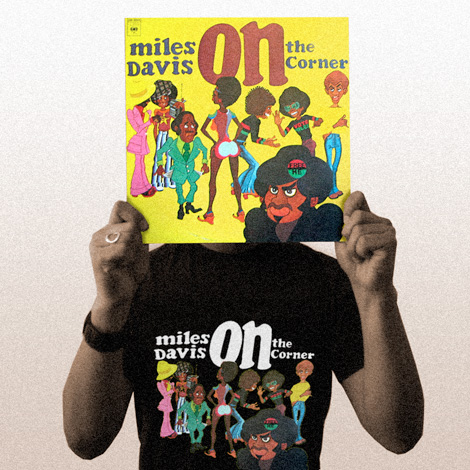


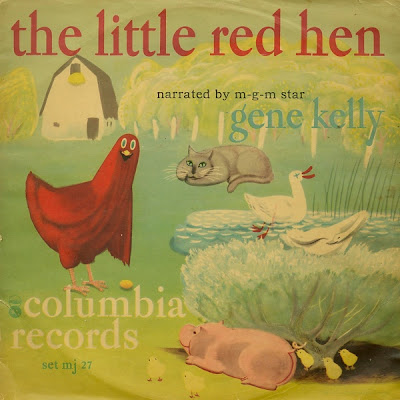
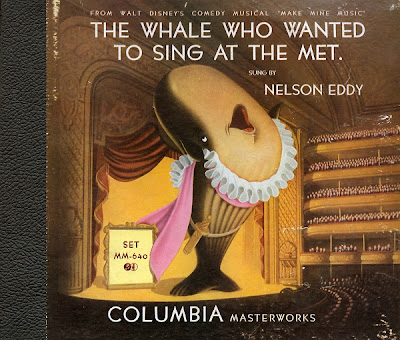
[...] library released millions of MARC records into the wild recently. They’re not the first, as Jessamyn West points out, but as a wild creature herself, the Loon cannot but approve of additional wild [...]
Apparently the Copyright Office is trying to figure out how to put its card catalog of pre-1978 records online: http://www.infodocket.com/2012/05/01/u-s-copyright-office-posts-request-for-information-to-build-a-virtual-card-catalog-of-records/